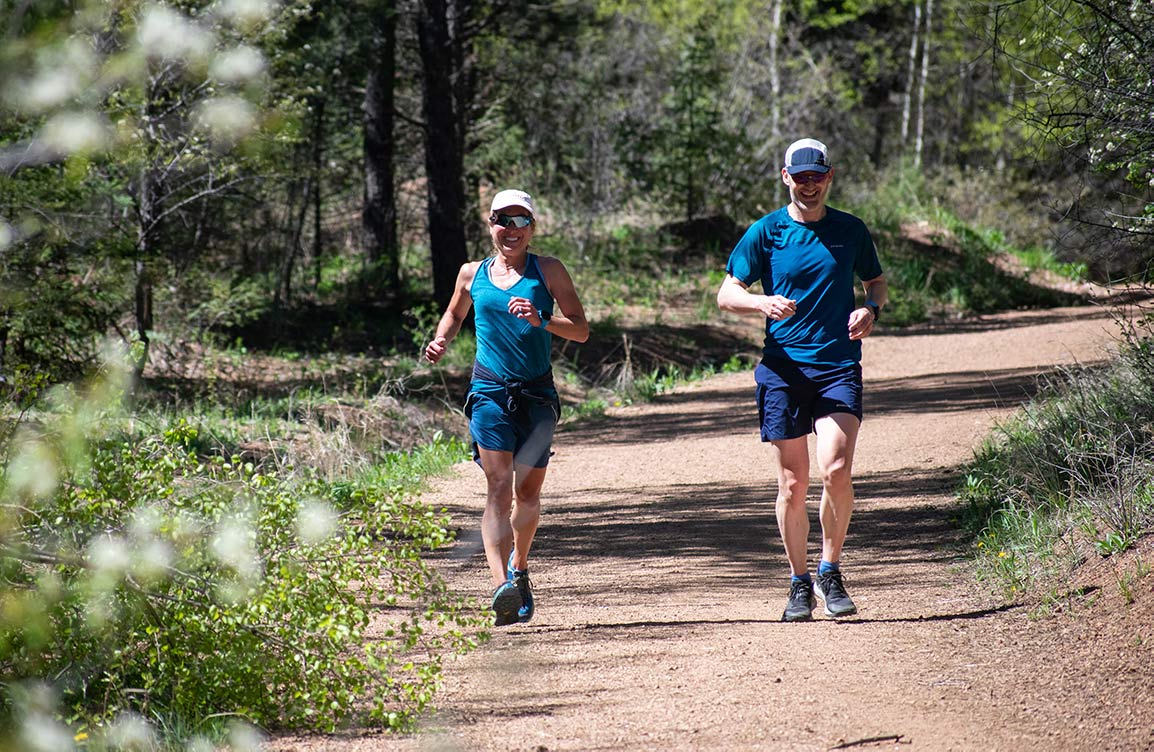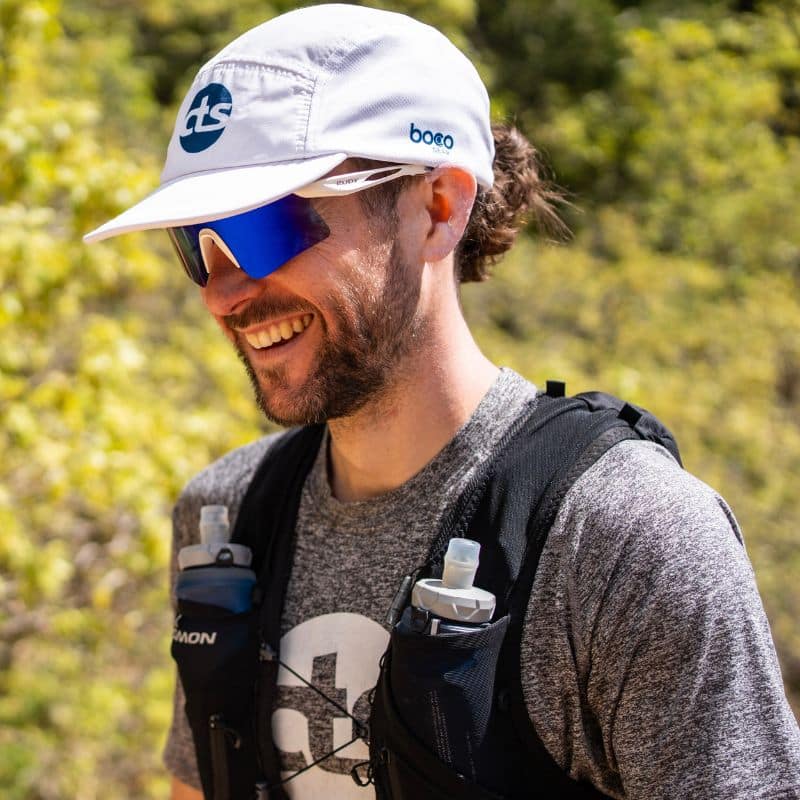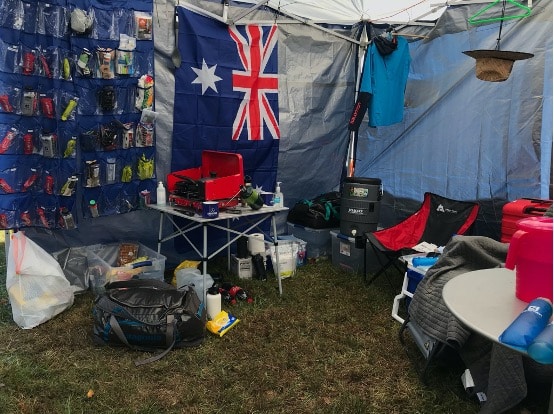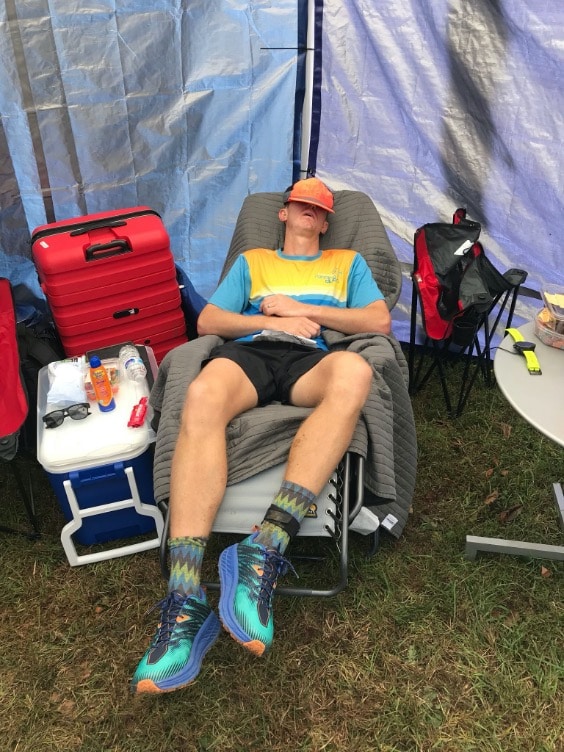
How a Backyard Ultra Can Boost Your Ultramarathon Training
Backyard Ultra Events exploded in popularity over the last few years thanks, in part, to their straightforward setup. The objective is to complete successive 4.167-mile loops, each in under one hour, for as long as you can. A little more than 4 miles in an hour sounds easy, and for the first few hours it is. Many hours later, it’s not so easy. Backyard Ultras are not only great challenges themselves, but they can also help runners solve failure points that plague them in start-to-finish races.
Backyard Ultras are “last person running” events, rather than a set start-to-finish distance (100 miles) or duration (24 hours). If you do not complete the loop and make it back to the finish line/starting corral by the top of the hour, your day(s) is finished. The repetitive nature of the laps encourages rote execution, the same process over and over. This creates a very controlled environment (or as controlled as you’re going to get in an ultra) that allows runners to find their limits and reach new distance milestones. Is every runner going to eventually run 354 miles over the course of 85 hours like Harvey Lewis’s record-breaking performance at Big’s Backyard Ultra in October? Probably not, but a runner can use the simple setup of a Backyard Ultra to solve failure points that have troubled them in past races and have a breakthrough performance.
Crewing
An effective crew can streamline time spent at aid stations, keep the runner mentally engaged, and solve problems before an issue derails your race. The beauty of a Backyard Ultra is that the runner sees their crew every hour. Backyard Ultras have basic aid station fare available to everyone, but each runner is allowed their own personal aid station tent. Within that area, the runner can have anything and everything they want. You can have a cot and sleeping bag for a quick nap, a camp stove to cook your favorite food, a wardrobe of extra shoes and clothes, and all your preferred nutrition and hydration products.
Four miles between aid stations and a set time to leave and get back out on course is the most accessible aid station setup of any ultrarunning event. There is no overthinking and overpacking drop bags that are scattered across successive aid stations on the course. Your crew is not frantically navigating sketchy forest roads and stressfully racing to the next aid station. The “hurry up and wait” mentality is replaced with “relax and wait.” The crew has more than enough time to prepare the aid station for the runner’s return. This encourages a stress-free environment to consume calories and address problems. You have time to make gear and clothing changes when necessary, and prepare optimally for the next lap.
Testing Nutrition and Hydration
Nausea and/or vomiting was cited as the second highest problem for finishers and the highest problem for non-finishers in Marty Hoffman and Kevin Fogard’s 2009 study that explored the issues that affected runners at the 2009 Western States and Vermont 100-mile races . Multiple factors contribute to stomach issues to stomach issues during an ultra. Among those are inadequate training, poor pacing during high temperatures, failure to stick to a plan, and not properly hydrating.
In a typical ultra, runners map out their nutrition and hydration plan before the race or set a reminder on their watch to remind them to eat and drink. Sometimes, however, a runner miscalculates the time between aid stations and runs out of food and water. Maybe the day was hotter than expected and the runner should have carried a third bottle. Or the runner simply lost their sense of time and frequency for how much they should eat and drink. Race at high elevation also affect some runners’ ability to consume calories.
Backyard Ultras reduce the guesswork of estimating time between aid stations and tracking energy and fluid consumption. Although the weather will change throughout the day and night, temperature should ebb and flow within reasonably predictable range because you’re staying within such a small geographical area.
Nutrition Goals
Nutrition goals can be as simple as eating a sports nutrition product on each loop, drinking one bottle of water, and eating some type of real food upon returning to the aid station. The crew member can easily keep track of how many calories the runner has consumed, what food options are working, and adjust hydration and electrolyte goals as the temperature changes throughout the day and night. For runners who successfully execute nutrition and hydration plans for 50k events but struggle beyond the 6- to 8-hour timeframe, the simplicity and standardization of a Backyard Ultra can be great for testing out different strategies.
Pacing
“I went out too fast,” is a common talking point in reviewing any ultrarunning performance. It’s completely understandable to go out too fast due to the palpable energy at the start line and feeling fresh a few weeks of tapering. But going out too hot can come back to bite you. You gain little to no advantage in “racing” each loop at a Backyard Ultra.
There is some strategy involved, at times. For instance, a faster loop means returning to your aid station with a little extra time to take a quick nap or make a gear change. But runners are generally better served by keeping their pacing steady throughout. Keep in mind, runners may have different goals, too. Some may be out to complete a personally relevant distance and then stop. Other runners are competing and attempting to be the runner standing.
A Backyard Ultra is not the format to chase a time PR at a certain distance. There is little utility in completing a loop in 40 minutes versus 55 minutes. Steady pacing encourages consistent energy expenditure and fueling habits.
► Free Cycling Training Assessment Quiz
Take our free 2-minute quiz to discover how effective your training is and get recommendations for how you can improve.
► Free Ultrarunning Training Assessment Quiz
Take our free 2-minute quiz to discover how effective your training is and get recommendations for how you can improve.
Camaraderie
Between spectators, crews, and fellow runners, you will not be alone during a Backyard Ultra. In a standard ultra, runners spread out and may run solo for hours. Running by yourself can be advantageous because you’re likely to stick to your own personal race strategy. It can also be a hindrance if you lose focus, struggle with negative thoughts, and subsequently slow down. Running with company may lower perceived exertion, provide access to more encouragement, and create a memorable race experience.
Runners also develop a strong bond with one another throughout a Backyard Ultra. There is a competitive element, in that they want to be the last one standing, but there’s also camaraderie that leads runners to push and support one another. Harvey Lewis, Chris Roberts, and Terumichi Morishita would no doubt credit each other in each runner’s ability to crest the 72-hour mark and go beyond 300 miles at Big’s Backyard Ultra.
Put It Altogether
The simple and standardized nature of Backyard Ultras allows every runner to fine tune critical ultrarunning skills. A Backyard Ultra may not be your idea of an A-race, but you can use a Backyard Ultra to better learn about yourself as a runner, solve and correct issues that have plagued you in past races, and reach distances that have previously eluded you.
By Ryne Anderson,
CTS Ultrarunning Expert Coach
References:
Enjoying This Article? Get More Free Running Training Tips
Get our coaches' best training advice, delivered straight to your inbox weekly.
Hoffman MD, Fogard K. Factors related to successful completion of a 161-km ultramarathon. Int J Sports Physiol Perform. 2011 Mar;6(1):25-37. doi: 10.1123/ijspp.6.1.25. PMID: 21487147.
► FREE Mini-Course: Learn How to Maximize Your Limited Training Time
Learn step-by-step how to overcome limited training time and get faster. Walk away with a personalized plan to increase your performance.
"*" indicates required fields



